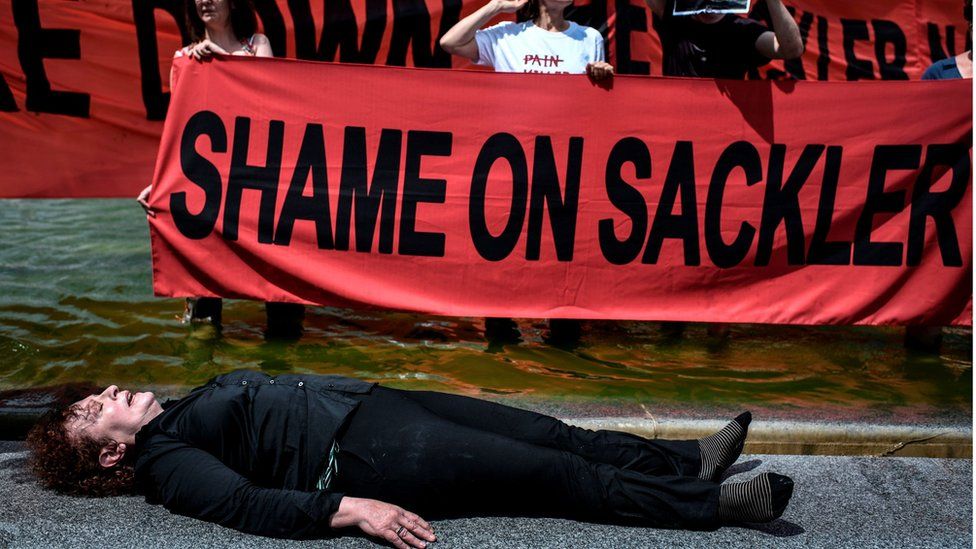THE LIBERTARIAN VIEW

What Deeper Lessons Can We Learn From Southwest Airlines’ Meltdown? – OpEd
By AIER
By Craig J. Richardson*
During the last week of December 2022, amid one of our nation’s worst snowstorms, Southwest Airlines canceled thousands of flights and sowed chaos and confusion among not only travelers but the flight crews themselves. The question as to why Southwest did so much more poorly than other airlines has been the subject of dozens of articles featuring interviews with transportation experts. On December 27th alone, Southwest was responsible for 87 percent of all flight cancellations in the country, even as the other airlines quickly recovered.
The majority of experts have centered on two reasons for the failure after the fact. First, the airline operates on a point-to-point system with some incidental connectivity through main cities, rather than a hub-and-spoke system that involves banks of airplanes all arriving and leaving a hub city within a designated time frame to enable transfers. Second, it is using antiquated software that works just fine for the vast majority of events but could not handle an extreme weather event. The combination of these two factors created a cascading failure, since a canceled flight on one leg of a flight left a crew stranded in a city, unable to complete the next series of point-to-point flights. The aging software was so overwhelmed that the airline did not even know the locations of its flight crews.
But the experts usually forget to mention something. Prior to the enormous storm, Southwest was known for its high efficiency and customer service. Two weeks before Southwest Airlines’ disastrous meltdown, its CEO praised his team as the best, “not just in the airline industry, but on the entire planet.” Note it takes a crisis to create instant experts who point out the “obvious” problems with an organization after the fact, but not before.
Indeed, a point-to-point system, when it is working well, is more efficient than a hub-and-spoke system in terms of getting people from point A to point B. This means that planes can fly directly to their destinations, which passengers favor, rather than having to fly to a busy hub city such as Atlanta, and then connecting on another flight. All of us who fly regularly have endured the stress of making a tight connection.
Not only is a point-to-point system favored by consumers, but average flight times are shorter, which saves fuel. Fewer planes are needed for a given route, as well as fewer flight crews, contributing to some of the lowest per-unit costs in the industry. Southwest’s decades-old but serviceable reservation system, at least until lately, has been just good enough the overwhelming majority of the time. Both of these factors have enabled Southwest to offer discounted fares as well as garner praise as one of travel customers’ favorite airlines.
So the question is this: why haven’t more airlines adopted Southwest’s model? After all, our economic theory teaches us that in competitive markets, firms seek out the most efficient means of production in order to increase profits. Those that do not will eventually go under.
The answer is not discussed in economic textbooks. Preparing for unexpected events is very difficult to build into a typical model of profit and loss. This is because it involves an unknowable tradeoff that each company must make between efficiency and resiliency. One cannot have more of both. Moreover, how the company thinks about time itself is part of this preparation. A company focused on the next quarter’s profits will think very differently than one that has a 25-year business plan.
Resiliency is the idea that a firm has something in its hip pocket that enables it to weather not just predictable challenging events, but also what are known as Black Swan events. A Black Swan event is a huge surprise, seemingly out of left field, does not follow probability theory and thus falls outside the normal business model or plan. Black Swan theory was first developed by Nassim Nicholas Taleb in his eponymous book. He notes that the possibility of a Black Swan event is often ignored by industry leaders, even though if and when it does happen, it causes a huge upheaval for the organization. As former Defense Secretary Donald Rumsfeld famously put it, there are “known unknowns,” and “unknown unknowns.” A Black Swan event is an unknown unknown.
It’s hard for a CEO to make a case for protecting against Black Swan events to shareholders and management if that event has never occurred, since spending money on protection against a potential Black Swan event means diminished profits on an ongoing basis. Leaders of these organizations only get to say, “I told you so” when the unlikely event happens. If it never does, they may only be blamed for lower profits and may never get credit for their foresightedness. This is different from purchasing an insurance policy for smaller scale losses with a known probability of occurrence.
This brings us to the current structure of the airline industry. The vast majority of airlines use the hub-and-spoke system, which is more resilient to these types of unexpected Black Swan disruptions. When one flight was canceled out of Atlanta, a major flight hub, the other airlines had multiple options to reroute passengers, and flight crews were more likely to be available rather than stranded in a remote city. The other airlines also had invested in more modern software that allowed them to adapt to extreme weather conditions.
As a result, Southwest’s bet on extreme efficiency on a daily basis made it ill-prepared for an unknown unknown. Perhaps the bias came from the short-term thinking of former CEO Gary Kelly, who came from the accounting world and has been described as a “number cruncher”.
In their 2014 book, Scarcity: The New Science of Having Less and How It Defines Our Lives, economist Sendhil Mullainathn and psychologist Eldar Shafir discuss ways that organizations can build resiliency by taking actions that at first glance may seem counter to profits. Their word for resiliency is “slack” and by that they mean deliberately building in inefficiency in order to handle unexpected events.
For example, an “efficient” and highly profitable hospital network may suffer a similar meltdown in operations under a bizarre mass casualty event, if it doesn’t have extra staff or space that appears unproductive on a balance sheet. Likewise, a domestic car company that does all its business with just one foreign steel company, in order to get the best negotiated prices, may be vulnerable to an unexpected political coup. What looks like inefficient slack or resiliency may in fact be an efficient long-term choice, if and when the Black Swan event occurs.
In an interconnected economy, we are in the dark when it comes to Black Swan events, so the best we can do is make an educated guess. If a firm had good information about these tradeoffs, it could swap units of efficiency for units of resiliency until the long-run return for each was the same at the margin, i.e. the last dollar spent for each. But in the real world, the firm can only get concrete information on efficiency.
Not surprisingly, in a market, there tends to be a bias towards what is measurable. In the Southwest Airlines’ case, it now appears they pursued an excess of transportation efficiency, which has measurable present benefits, instead of adding more resiliency, which has unmeasurable future benefits.
The lesson of Southwest Airlines’ debacle is not that it was “dumb” or “shortsighted.” Rather, it should make all of us think more deeply about the opportunity costs and benefits of small, or marginal changes in this efficiency-resiliency tradeoff. Southwest bet wrong, to be sure, but without the massive winter storm, many “experts” would probably still be singing praises about Southwest’s innovative and low-cost business model.
Bob Jordan, Southwest’s CEO for the past 10 months, has inherited its aging software and promises to invest more in technology that presumably will make the airline more resilient. But there has been no word on changes to its point-to-point system, something that will doubtless take months to evaluate in the wake of the recent meltdown in operations.
This brings us back to the response of the Federal government. Secretary of Transportation Pete Buttigieg wrote Southwest a stinging letter, saying that the US federal government will “follow up” on the airline if it does not deliver promises on reimbursing all travel costs.
But there is something else that could make airlines more accountable, and give all airlines more incentive to think harder about the potential impact of Black Swan events. If we had increased competition from more airlines, that would lead to more choice, especially in smaller cities. A 1993 American Economic Review study found that mergers between two airlines led to more market power and higher airfares, on average. For example, American Airlines now controls 90% of capacity at its hub in Charlotte, NC after the merger with US Airways in 2013. The city recorded the second highest jump in airfares in 2022, a phenomenon seen with previous airline mergers in smaller cities.
Ordinarily, free entry into the marketplace would solve the problem of higher than normal profits, with the entry of hungry competitors bidding down prices. But that is held back by the Civil Aeronautics Act of 1938, which according to a 2003 GAO report, requires that US citizens own or control at least 75 percent of the voting interests of US airlines. The primary reasons are: “(1) protection of the US airline industry, (2) regulation of international air service through bilateral agreements, (3) concern about allowing foreign aircraft access to US airspace, and (4) military reliance on civilian airlines to supplement airlift capacity.”
These concerns seem very likely to serve as excuses to secure an oligopoly structure in many smaller cities and make our air travel system less resilient than it might otherwise be. After all, airlines like Southwest will truly learn their lesson if a competitor is available to scoop up customers after a catastrophic failure. That decision showcased a bet on efficiency which took the company in the wrong direction, away from resiliency.
Our current laws forbidding foreign competition look a lot like the ones that held back imported cars in the 1970s, leading to some of the worst vehicles ever produced by the Big Three auto manufacturers. Regulations have their place, but will never be the leading reason for large companies to innovate, nor think more carefully, long-term about the marginal costs and benefits of increasing resiliency.
*About the author: Craig J. Richardson is the Founding Director of the Center for the Study of Economic Mobility at Winston-Salem State University. He also was an AIER Visiting Research Fellow from 2005-2012. He received his BA in economics from Kenyon College and his Ph.D. in economics from the University of North Carolina at Chapel Hill.
Source: This article was published by AIER
:quality(70):focal(1993x1212:2003x1222)/cloudfront-eu-central-1.images.arcpublishing.com/thenational/L7UX4RGRQ4ZEOXIBVRHMPYKA2I.jpg)
:quality(70)/cloudfront-eu-central-1.images.arcpublishing.com/thenational/A3EWSWOTKUKIPJUF2FBQOEQJNE.jpg)
:quality(70)/cloudfront-eu-central-1.images.arcpublishing.com/thenational/6P4GRV6THRWZWHQZ65R7HJA35U.jpg)
:quality(70)/cloudfront-eu-central-1.images.arcpublishing.com/thenational/YMBDE6SSSSJPPOLKD2UL3DX53A.jpg)
:quality(70)/cloudfront-eu-central-1.images.arcpublishing.com/thenational/FKBQXPX67ARPEC53EZBMP3LOIY.jpg)
:quality(70)/cloudfront-eu-central-1.images.arcpublishing.com/thenational/ISN3NAVCYLO3KLEZLLG7OHQOIU.jpg)
:quality(70)/cloudfront-eu-central-1.images.arcpublishing.com/thenational/O6GHP3A2TGPZPHNDN4FMQSCAEI.jpg)
:quality(70)/cloudfront-eu-central-1.images.arcpublishing.com/thenational/5ZYNDGDQYD4COO3THQ6GM3QKGQ.jpg)
:quality(70)/cloudfront-eu-central-1.images.arcpublishing.com/thenational/6O2TUUA5EU5EBL75NTPXFC6CEY.jpg)
:quality(70)/cloudfront-eu-central-1.images.arcpublishing.com/thenational/C24YK7QRXR2TSD55LJZJCOKPPM.jpg)
:quality(70):focal(2760x1956:2770x1966)/cloudfront-eu-central-1.images.arcpublishing.com/thenational/6DUTZMJXKY6LJM2DKVSYFALFIU.jpg)
:quality(70)/cloudfront-eu-central-1.images.arcpublishing.com/thenational/V72ZTHY2NBT7HDDLZHXJ7RM3OE.jpg)
:quality(70)/cloudfront-eu-central-1.images.arcpublishing.com/thenational/6HYKIVAPZYQMH2ANEQDTLCG2IM.jpg)
:quality(70)/cloudfront-eu-central-1.images.arcpublishing.com/thenational/LK6UHMT2M2QC4L62XPEMNAYZJM.jpg)
:quality(70)/cloudfront-eu-central-1.images.arcpublishing.com/thenational/KIARWZED5U34BSZSPKRUTAL6VU.jpg)
:quality(70)/cloudfront-eu-central-1.images.arcpublishing.com/thenational/DFEJMXQSZCIRP4RBWRHGZL25SM.jpg)
:quality(70)/cloudfront-eu-central-1.images.arcpublishing.com/thenational/OAGKLI3SFBNNTP6H6BCZ5YSHZE.jpg)
:quality(70)/cloudfront-eu-central-1.images.arcpublishing.com/thenational/QY3FVKLK3QYZJE3GJYCVRBK3IM.jpg)
:quality(70)/cloudfront-eu-central-1.images.arcpublishing.com/thenational/VTV57L3KV5VDSVQQ6GDICZSQNY.jpg)
:quality(70)/cloudfront-eu-central-1.images.arcpublishing.com/thenational/H22HRWYY7KL2G7YTWUSZQQ4Y5U.jpg)
:quality(70)/cloudfront-eu-central-1.images.arcpublishing.com/thenational/562RCYYVECN73BU6A5LGZIXUIE.jpg)
:quality(70)/cloudfront-eu-central-1.images.arcpublishing.com/thenational/CCJD4WWWVFSXG53FDEMD2ACQPQ.jpg)
:quality(70)/cloudfront-eu-central-1.images.arcpublishing.com/thenational/PGWOGLZ72YPIEXHYUXT4M2O2L4.jpg)
:quality(70)/cloudfront-eu-central-1.images.arcpublishing.com/thenational/OHHIXNMEJNKDP5BT4ZSOEVUMRE.jpg)
:quality(70)/cloudfront-eu-central-1.images.arcpublishing.com/thenational/X7RMLNFFM4VTAFYM3QJKBOSV5E.jpg)
:quality(70)/cloudfront-eu-central-1.images.arcpublishing.com/thenational/LOMU7FVLWDZ5P3ANJJMZQZT44E.jpg)
:quality(70)/cloudfront-eu-central-1.images.arcpublishing.com/thenational/O4XDIRMNKPTE64CY3F2IHXM5AE.jpg)





